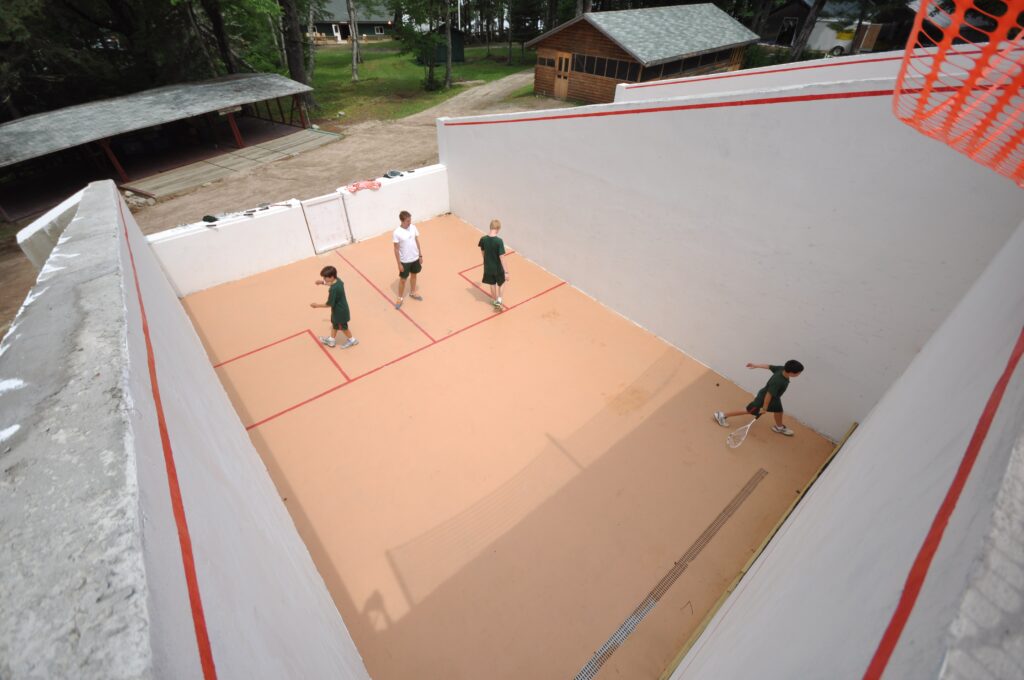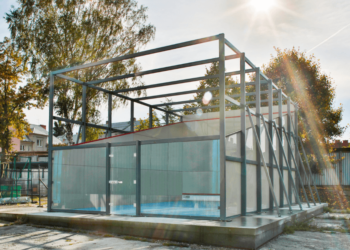In Iran, plans are underway to build hundreds of makeshift outdoor squash courts for $700 apiece.
Meanwhile, stunning outdoor steel courts that resemble architectural works of art are popping up in big US cities such as New York and Chicago.
Despite the contrasting budgets involved, the goal in both cases is the same: to make the game we love more accessible to the masses.
Let’s go outside
Squash remains a mystery to most people. They can’t see it on TV. And the courts at their local leisure centre, if they exist at all, are often hidden in the bowels of the building – sometimes only visible through a tiny spyhole.
But there is a growing movement that’s looking to change all this by taking squash outside.
Spearheading this movement is the PSA Foundation, the charitable arm of the Professional Squash Association. Its mission is to increase squash participation around the globe.
Outdoor squash “symbolises accessibility at a grassroots level”, it claims.
Some 88 per cent of the more than 1,000 respondents the PSA Foundation questioned in a recent outdoor squash survey said they would personally enjoy being able to play squash outdoors. Seven out of ten of the respondents were squash fans or recreational players, with 11.5 per cent having decision-making roles in the game.
Some 83 per cent believed that having opportunities to play squash outdoors in public settings would help grow membership levels at squash clubs.

Squash in the city
It can’t really get more public than Maggie Daley Park in downtown Chicago, where the PSA Foundation is hoping to oversee the building of two state-of-the-art steel courts offering bystanders a 360 view of the action. Its side and front walls would display rotating art exhibits.
‘Project Beacon’, which is subject to the input and approval of the Chicago Park District, is itself inspired by an outdoor steel court that opened in Queens, New York, in 2020. The Intsel Steel Outdoor Squash Invitational Pro Tournament held there in November 2022 was won by US pro Timmy Brownell.
England professional, Nathan Lake, who also competed in the event, confirmed that he plans to return in future years.
“Outdoor squash is a revelation, it gets the game out of private clubs and into the public eye and above all it provides a great environment to play squash,” he said.
The €1.5m TPoint Tel Aviv hub in Israel features four outdoor glass courts controlled by an app allowing players to practise all year round, meanwhile.
“Playing inside a glass court enclosed within four transparent walls, is a supreme feeling. Just like playing on the Wimbledon main court,” said Israeli Squash Federation chief Aviv Bushinsky.
The TPoint courts are built by ASB Squash, a squash court construction firm that has been operating since 1976. As well as the TPoint, it has developed the ASB CommunitySquashCourt, which features a unique glass surface with burned-in ceramic areas. Its glass surfaces are protected against vandalism. In another boon for outdoor squash, ASB is also in the process of introducing its ASB OutdoorSquashCourt (pictured top).
Three-wall workout
But could outdoor squash also be the key to growing the game in the developing world, particularly in hot, dry countries whose climate lends itself to the concept?
A pilot to build 100 outdoor courts in villages in Iran’s Sistan Baluchistan province is underway as the country looks to inspire the next generation of squash players.
There are only two usable traditional courts in the provincial capital, Zahedan, but they cost several thousand dollars to build. The new, outdoor, three-wall courts cost just $700 to erect.
The plan is to produce 2,500 new squash players in the region.
“We built the first court next to a football ground, and the kids really liked that,” said Masoud Ziaeddini, Director of International Affairs at the Squash Federation of Iran.
“They went from just playing football, to playing squash while they are waiting for the pitch [to be vacated]. Now, more and more come whenever they are playing football, or after training. Some of them are skipping football because they are staying on the squash court.”

Constructive feedback
The PSA Foundation’s survey did not gloss over the potential pitfalls of outdoor squash, with some respondents feeling that the format could be compromised by bad weather or vandalism. The prospect of outdoor squash complicating the sport by introducing new formats of playing, as well as issues around ongoing court maintenance, were also raised as concerns.
The charitable body said it would take the “positive and constructive feedback will contribute to our aim to grow outdoor squash around the world”.
“We are optimistic and excited to further progress this innovative movement,” it added.
Download the full results of the survey here.
-
Doug Woodburnhttps://squash-iq.com/author/drwoodkyahoo-co-uk/
-
Doug Woodburnhttps://squash-iq.com/author/drwoodkyahoo-co-uk/
-
Doug Woodburnhttps://squash-iq.com/author/drwoodkyahoo-co-uk/
-
Doug Woodburnhttps://squash-iq.com/author/drwoodkyahoo-co-uk/





There. is also an outdoor squash court in Burlington, VT. It’s the only permanent, outdoor, publicly accessible squash court in the U.S. It was built in 1999 by Steven Polli, former squash pro and now construction contractor.
Come visit!